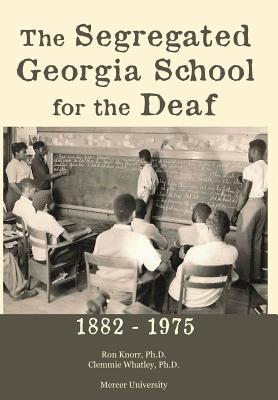In the years following the American Civil War, few educational opportunities were provided to newly-freed black citizens. The situation was compounded for black deaf children in the American South. Efforts to educate these children were delayed and deferred in most southern states. Even as the need for this education became obvious, southern legislatures frequently denied or deferred any real educational opportunities for black deaf children. In The Segregated Georgia School for the Deaf, Ron Knorr and Clemmie Whatley tell the story of one such institution designed to educate Georgia's black deaf children. Beginning with early efforts during Reconstruction, Knorr and Whatley trace the often tumultuous and neglectful history of the education for these students from the time of the Jim Crow South through efforts during the Progressive Era to improve the plight of these children. This history of the segregated school continues through two world wars and the struggle for civil rights, ending with the ultimate desegregation of the school. Rich with contemporary stories, firsthand accounts and interviews, and photographs and illustrations of its history, The Segregated Georgia School for the Deaf is a compelling story of heroic efforts to improve the lot of these students along with the often shameful neglect of Georgia's most vulnerable children.

The Segregated Georgia School for the Deaf: 1882-1975
In the years following the American Civil War, few educational opportunities were provided to newly-freed black citizens. The situation was compounded for black deaf children in the American South. Efforts to educate these children were delayed and deferred in most southern states. Even as the need for this education became obvious, southern legislatures frequently denied or deferred any real educational opportunities for black deaf children. In The Segregated Georgia School for the Deaf, Ron Knorr and Clemmie Whatley tell the story of one such institution designed to educate Georgia's black deaf children. Beginning with early efforts during Reconstruction, Knorr and Whatley trace the often tumultuous and neglectful history of the education for these students from the time of the Jim Crow South through efforts during the Progressive Era to improve the plight of these children. This history of the segregated school continues through two world wars and the struggle for civil rights, ending with the ultimate desegregation of the school. Rich with contemporary stories, firsthand accounts and interviews, and photographs and illustrations of its history, The Segregated Georgia School for the Deaf is a compelling story of heroic efforts to improve the lot of these students along with the often shameful neglect of Georgia's most vulnerable children.